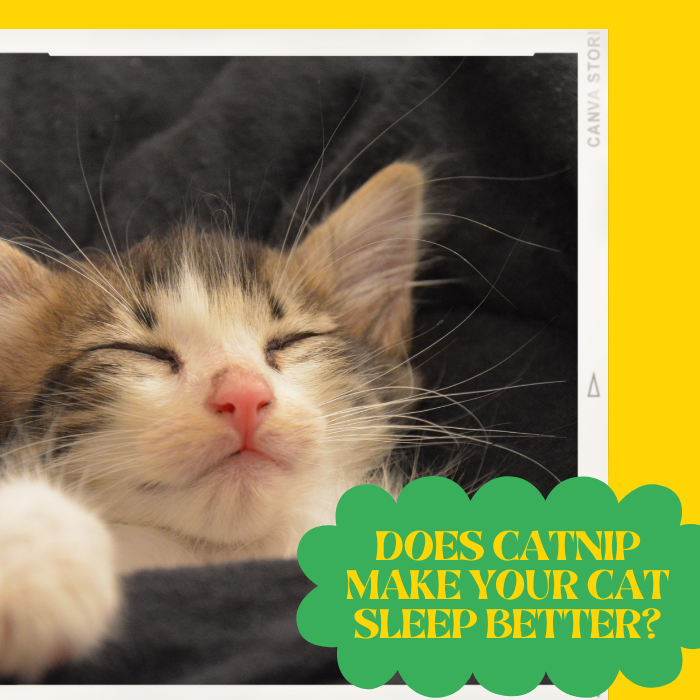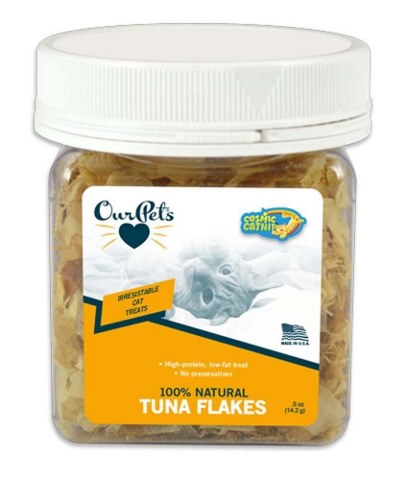
Does Catnip Make Your Cat Sleep Better?
If you own a cat, you’ve undoubtedly seen how much they love catnip. Giving your cat a bit of this herbal treat in their chew toy or bed is a healthy way to keep them engaged and entertained.
The majority of cats can’t get enough of it and will return for more time and time again. It has a distinct impact on them, causing them to behave uniquely. But what exactly is catnip, and how would it help your beloved companion sleep? Are there any trusted catnip products you can safely give your furry companion? Read on to know the basics behind catnip and various ways in which it influences your cat.

What is catnip?
Catnip is an evergreen plant that belongs to the Mint community Labiatae and is widely known for making cats function amusingly. It can be identified by the jagged leaves and tiny white blooms. Catnip is indigenous to Europe and Asia but naturalized in the United States and Canada since its introduction. Catnip comes in around 250 different varieties.
What makes the catnip work?
Even a minimal dose of catnip can elicit a response in most cats. The main component in catnip, nepetalactone, has been shown to have substantial effects on felines at a concentration of 1 part per billion. As a result, even catnip lying about for a long time will still be strong enough to have a slight impact on your cat. You can buy Herbal Curpel Catnip’s jar to give your furry buddies the treats they deserve.
As previously mentioned, nepetalactone is the active component in catnip. When cats inhale the fumes that catnip emits, this chemical is released. This answers why cats like playing with catnip and chewing the leaves since it speeds up the production of fumes and the smell they want. If your cat is a real catnip fan, you can use it on your premium cat beds.

How to utilize catnip for your pet’s comfort?
Using their favorite snacks or a smidgeon of fresh catnip, you can entice your finicky kitty to the cat beds. Catnip is an excellent method to pique your cat’s curiosity in something new while encouraging them to relax and roll about in the bed. And, as an additional benefit, cats like to cuddle up and sleep after their catnip “high,” making the new bed more appealing to them!
After you’ve purchased your pet’s favorite cat beds and loungers, you would want them to get habitual to it. Sprinkle some catnip on the bed to make your cat hop on the bed. If your cat doesn’t want to sit or lay down on the bed, don’t push it since this may lead to destructive emotions with the bed. To encourage your kitten to return later, you can also leave a sprinkle of catnip on their favorite goodies.
Do you need to use catnip for your cat’s comfort?
Catnip’s soothing qualities make it an excellent choice for calming and relaxing your cat. This is particularly beneficial if your cat is anxious, agitated, or afraid. Catnip may help your cat in a variety of circumstances, including:
- Getting used to having a new animal in the home
- Relocating to a new place
- Visiting a veterinarian
While many people think of cats as exclusively independent and unhappy creatures, they share many of the same emotions as humans, including:
- Anxiety over being apart
- Fear
- Confusion
- Depression
- Loneliness
Catnip is an excellent method to give your cat some sense of peace when they’re not feeling well, which may help you and your cat relax. It also provides a new experience for your cat, which may help to decrease boredom and increase activity levels. This makes it an excellent choice if your cat lacks stimulation and may benefit from a pleasant method to have some fun and then relax.

How to use catnip to put your cat to sleep safely?
Catnip comes in a variety of forms, including:
- Catnip plants
- Flakes of catnip
- Spray for cats with catnip
- Toys made with catnip.
- Treats made with catnip
Your furry friend’s response may vary depending on the kind of product you buy. You can also purchase cat beds for sale to give your pet an enhanced sense of comfort, which will help them sleep better. Ingesting catnip is the easiest method to make your cat drowsy while sniffing it will make your cat cheerful first and then tired. Your cat’s reaction may be changed by the kind of catnip you use.
Catnip is a non-addictive herb. It means you may give your cat catnip countless times, and it will have no severe effects, and they will not grow appetites for it if you reduce the dosage. Your cat will likely go wild for catnip if they see it or smell the leftovers, much as they may get thrilled when it’s dinnertime, even though it’s not addictive. While catnip is easily accessible and safe to use, it’s critical to ensure that you’re doing it correctly.
Use catnip in moderation, whether you sprinkle flakes all over the room or spray it on your cat’s belongings. There is no substantial evidence that your pet may overdose on catnip, but they may suffer stomach problems such as vomiting and diarrhea if they consume too much at once. Limiting your pet’s catnip intake will ensure that you and your feline companion may continue to reap the fruits of catnip without experiencing any stomach discomfort.

What is the final verdict?
Catnip does not affect kittens under four months, thus giving the herb to a young cat will provide no benefits till they’re grown. Based on their genetic composition, your pet has the potential to react to catnip between the ages of 3 and 6 months. According to some estimates, 70-80 percent of cats will respond to the plant somehow; however, other data suggest that this percentage may be closer to 50/50. Even if your cat doesn’t react to catnip’s scent, eating the herb may cause moderate drowsiness and help your cat relax and sleep.
- Choosing a selection results in a full page refresh.












